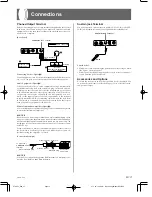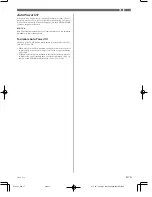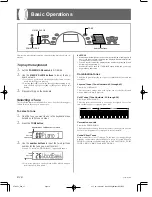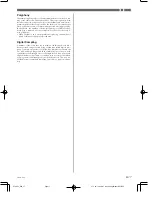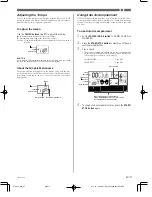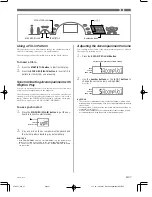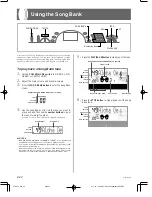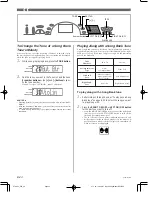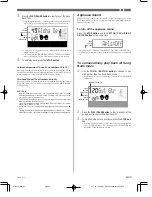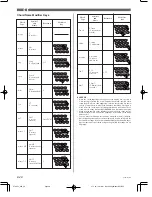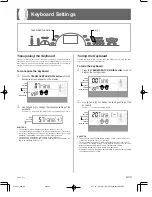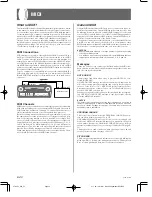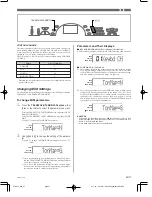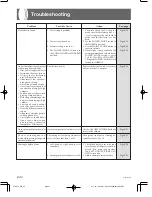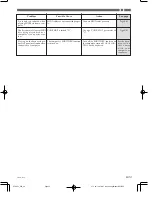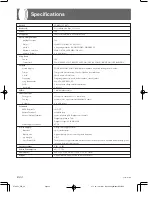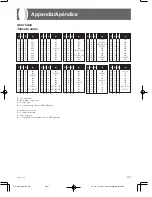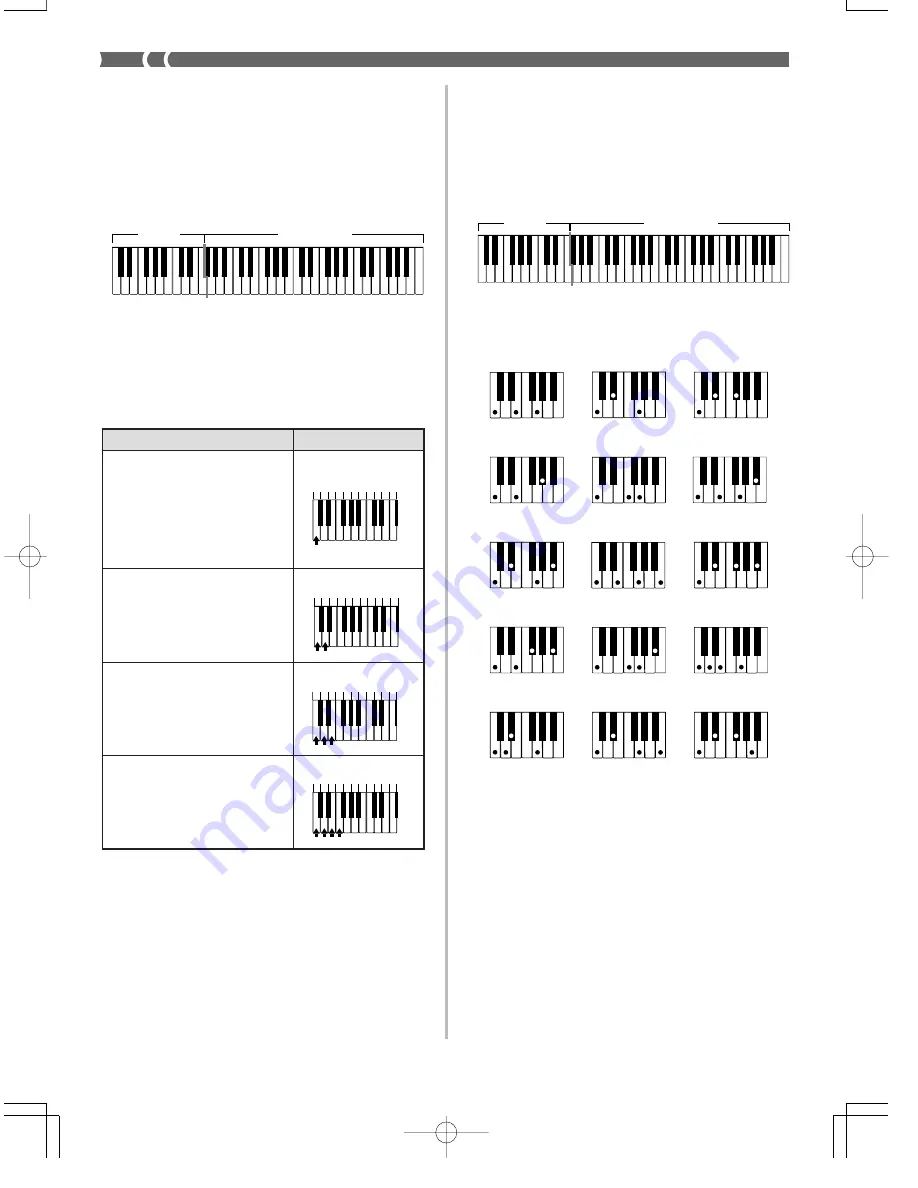
E-20
( )
( )
( )
( )
( )
( )
❚
NOTE
❚
The accompaniment keyboard can be used for playing chords only.
No sound will be produced if you try playing single melody notes on the
accompaniment keyboard.
Chord Types
CASIO CHORD accompaniment lets you play four types of chords
with minimal fingering.
❚
NOTE
❚
It makes no difference whether you press black or white keys to the right
of a major chord key when playing minor and seventh chords.
CASIO CHORD
This method of chord play makes it possible for anyone to easily play
chords, regardless of previous musical knowledge and experience.
The following describes the CASIO CHORD “Accompaniment key-
board” and “Melody keyboard”, and tells you how to play CASIO
CHORDs.
CASIO CHORD Accompaniment Keyboard and Melody
Keyboard
Melody keyboard
Accompaniment
keyboard
C minor seventh (Cm7)
Major chords
Major chord names are marked above
the keys of the accompaniment key-
board. Note that the chord produced
when you press an accompaniment
keyboard does not change octave, re-
gardless of which key you use to play
it.
Minor chords (m)
To play a minor chord, keep the ma-
jor chord key depressed and press any
other accompaniment keyboard key
located to the right of the major chord
key.
Seventh chords (7)
To play a seventh chord, keep the ma-
jor chord key depressed and press any
other two accompaniment keyboard
keys located to the right of the major
chord key.
Minor seventh chords (m7)
To play a minor seventh chord, keep
the major chord key depressed and
press any other three accompaniment
keyboard keys located to the right of
the major chord key.
Example
Chord Types
C D E F G A B C D E F
C Major (C)
C seventh (C7)
C minor (Cm)
See the “Fingered Chord Chart” on page A-3 for details on playing
chords with other roots.
*
1:
Inverted fingerings cannot be used. The lowest note is the root.
*
2:
The same chord can be played without pressing the 5th G.
❚
NOTES
❚
• Except for the chords specified in note
*
1
above, inverted fingerings (i.e.
playing E-G-C or G-C-E instead of C-E-G) will produce the same chords
as the standard fingering.
• Except for the exception specified in note
*
2
above, all of the keys that
make up a chord must be pressed. Failure to press even a single key
will not play the desired FINGERED chord.
FINGERED
FINGERED provides you with a total of 15 different chord types. The
following describes the FINGERED “Accompaniment keyboard” and
“Melody keyboard”, and tells you how to play a C-root chord using
FINGERED.
FINGERED Accompaniment Keyboard and Melody Key-
board
❚
NOTE
❚
The accompaniment keyboard can be used for playing chords only. No
sound will be produced if you try playing single melody notes on the ac-
companiment keyboard.
Melody keyboard
Accompaniment
keyboard
C7
*
2
Cm7
*
2
C
Cm
Cdim
Caug
*
1
Csus4
Cmaj7
*
2
Cm7
-5
C7
-5
*
1
C7sus4
Cadd9
*
2
Cmadd9
*
2
CmM7
*
2
Cdim7
*
1
C D E F G A B C D E F
C D E F G A B C D E F
C D E F G A B C D E F
622A-E-022A
CTK451̲E18̲21
01.7.26, 10:40 AM
Page 20
Adobe PageMaker 6.5J/PPC
Summary of Contents for CTK-451
Page 2: ...622A E 002A CTK451 E cover1 01 7 26 10 39 AM Page 2 Adobe PageMaker 6 5J PPC ...
Page 41: ... 622A E 075A CTK 451 ES APPENDIX 01 7 26 10 41 AM Page 5 Adobe PageMaker 6 5J PPC ...
Page 42: ... 622A E 076A CTK 451 ES APPENDIX 01 7 26 10 41 AM Page 6 Adobe PageMaker 6 5J PPC ...
Page 43: ... 622A E 077A CTK 451 ES APPENDIX 01 7 26 10 41 AM Page 7 Adobe PageMaker 6 5J PPC ...








